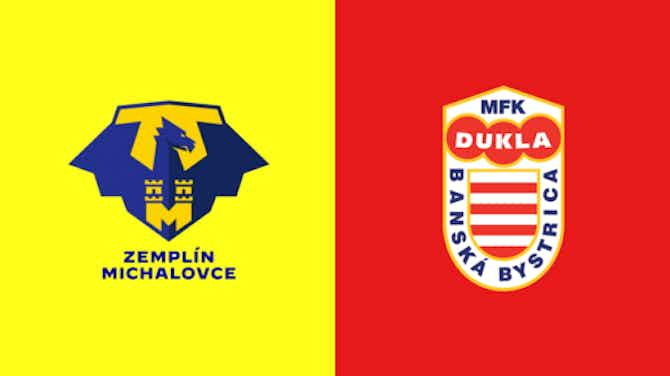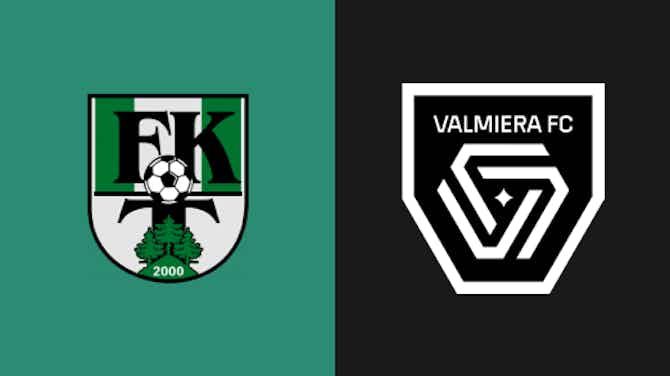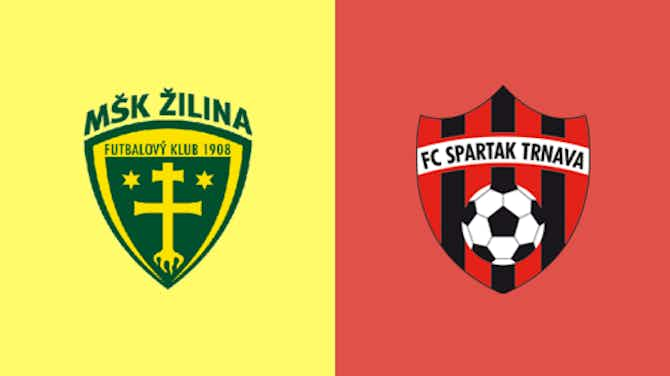FootballBH
·23 October 2020
Lionel Messi at Barcelona 2020/21 – scout report

FootballBH
·23 October 2020

The ‘false 9’ role is not new for Messi. He was deployed in that position under Pep Guardiola and for 4 years during that time, both Messi and Barcelona enjoyed huge successes. Barcelona won 14 trophies during that era, including 1 six-tuple, and that team went down in history as one of the greatest sides of all time. Messi bagged 228 goals and 93 assists in 259 appearances for club and country during that period, whilst also winning 4 consecutive Ballon d’Ors, a world record at the time.
After Guardiola, Messi was deployed as a right-winger by other coaches, but he always liked to shuffle centrally.
Nevertheless, the pure False 9 role ended at the finale of Pep’s Era at Barcelona, and with that ended the era of a footballing side who many saw as tactically flawless.
Ronald Koeman, who as a player was mentored by Pep’s own mentor, the late Johan Cruyff, has rejuvenated this role, and once again Messi is back in the False 9 position. We will look at the tactical tenets of Koeman’s way of using it, in this analysis.
In this tactical analysis, in the form of a scout report, we will be doing an in-depth analysis of how the new Barcelona boss is using Lionel Messi in his tactics as a False 9 in his new 4-2-3-1 formation, by deploying Messi in the lone striker position.
As discussed earlier, Messi is deployed as the lone striker in 4-2-3-1 with generally Philippe Coutinho behind him as the attacking midfielder, Antoine Griezmann as a right-winger, and Ansu Fati as the left-winger.

Here we see the starting lineup for the first three games that Barcelona have played this season. All four forwards have started in that position, but as is always the case with Barcelona, who play on the melody of Total Football, the players keep rotating positions to open up spaces and create different hybrid patterns of plays.



In the above example, it is clearly justified why Messi’s heat map is the way it is. Both these images are instances from Barcelona’s league game against Sevilla. In the first image, Sergi Roberto has the ball and is running forward to launch an attack. Messi immediately drops to provide him with a passing option. He drops very deep into the midfield, even entering his own half, as we see in the second image, where he has the ball.
This is very unlike a typical striker in a 4-2-3-1. This is a False 9’s role. Though, once again, it is very different from modern-day False 9s, such as Roberto Firmino, who also drop deep but not as much as Messi does.
Messi’s instinct to drop and his knack to get near the ball is the reason he has done a lot of creative work this season. He has been involved in 302 actions in the 288 minutes that he has played for Barcelona this season and has successfully completed 210 of them earning himself a success rate of 69.53%.
Messi averages 57.19 passes per 90 minutes with an absurd accuracy of 87.98%. Also, most of the time, Barcelona look to move forward through him and look to get the Argentine on the ball as much as possible. That’s the reason he is also the one to receive most passes, averaging 49.38 received passes per 90.
Barcelona, since the days of Xavi Hernández, Andrés Iniesta and Dani Alves, etc, have had a lot of emphasis on dribbles as well, with Messi being at the forefront of that. There’s no doubt about the fact that Messi is one of the best dribblers the world has ever seen, and in this season as well, we clearly see him in action with the ball glued to his feet, as we have seen over the years.
He averages 7.5 dribbles per 90 with a success rate of 62.5%, which is the highest for any Barcelona player. Messi’s dribbling ability also results in him getting involved in a lot of offensive duels, averaging 15 offensive duels per 90 with a success rate of 54.17%.
Messi’s extensive activity all over the pitch is also indicated by the fact that he averages 2.81 progressive runs covering an average distance of 93.57m per 90.
He is also the one to make most of the progressive passes with 6.25 progressive passes per 90 covering 197.15m.
The heat map also shows a lot of activity on the right flank. Especially on the right flank near the defensive midfield region.

There’s a tactical reason for this which can be analysed by seeing Barcelona’s new formation under Koeman. In a 4-2-3-1, there’s practically just two midfielders, both acting as double pivots. One of them is a box-to-box midfielder (Frenkie de Jong), and the other retains his position so the team has a central hub to rotate around (Sergio Busquets).
This practically results in Barcelona having fewer personnel in the midfield compared to a more popular 4-3-3 or 3-4-3. And outnumbering the opponent in the midfield has always been one of the prime reasons for Barcelona’s success. “Barca win in midfield”, is a very popular saying amongst football’s purists.
So, to overcome this numerical disadvantage, and provide Barcelona with a tactical advantage, Messi drops into that defensive midfield region on the right flank.
In a more traditional 4-2-3-1, this work is done by one of the two wingers, because in most teams playing 4-2-3-1, the wingers are wide midfielders. But this is not the case with Barcelona as both Fati and Griezmann (the two wingers) are forwards.
Also, when Messi drops into the flank, Griezmann or Coutinho take the central position of the striker.

Here we see Messi (in red circle) so deep inside the right flank just near the halfway line operating almost as a right-winger. And we see Griezmann (in dark red circle) playing as the central striker. This is one of the reasons Messi’s heat map is so widespread, unlike a typical striker in a lone striker formation.
One very significant advantage of playing a 4-2-3-1 formation in a team that plays on the values of Total Football of having positional and formational fluidity is that you can have various patterns of plays.
You can have a 3-5-2, a 2-4-4, a 3-4-1-2, etc. With a forward as unpredictable as Messi, this job gets easier and a lot more efficient than it normally would in any other team.

In the above image, we see Messi deep into the midfield region, like a False 9. This results in the 4-2-3-1 getting converted to a much hybrid 3-3-1-3.

In the situation above we see a very big advantage of playing a hybrid 4-2-3-1. Here the formation has shifted to a combination 3-4-3. This transition happens too fast for any team to perceive. We can see Coutinho (in the orange circle) at the centre, completely unmarked, looking to combine with Messi. There’s Ansu Fati (in the dark red circle) at the far side of the left flank, totally unmarked, making the pitch as wide as possible. And then there’s Jordi Alba (in the black circle), at the left-back position, looking to make overlapping runs bypassing the defence and cross the ball to any player inside the box.
There’s not a tiny bit of doubt about the fact that Messi’s scoring form has seen a significant dip in the season so far.
He has only scored 1 goal for Barcelona. That was a penalty he converted against Villarreal which was won by Fati. He has 0 assists in this season, 0 second assists, and 0 third assists as well.
His 1 goal so far means he has an average of 0.31 goals per 90. He does have an xG of 2.16, but that’s the only positive metric Messi has clocked this season in terms of stacking up goals.
The reason for this downfall in scoring charts lies in the proper analysis of 4-2-3-1. In a lone striker formation, the central striker lurks in the final third, inside the opponent’s penalty area, as we now see in Bayern Munich with Robert Lewandowski playing as the lone striker or as we saw in Mourinho’s Chelsea with Didier Drogba and Mourinho’s Real Madrid with Cristiano Ronaldo/Karim Benzema.
But this is not the case with Messi, as we have seen in the analysis above. Messi drops. He doesn’t remain lurking in the final third. Hence why he gets very fewer scoring chances. We can see that in his heat map.

The marked region shows that Messi has very less activity in Zone 14 and other areas in front of the goal for him to have any significant scoring opportunity.
Whenever Messi did have any impactful scoring chance, it was by his own sheer brilliance of running through defenses like a hot knife through butter. But each time he got caged by opponents’ centre-backs as Messi’s heavy reliance on dribbling and Barcelona’s heavy reliance on Messi’s magic to score goals from dribbling, has become highly predictable.
During the days of Xavi, Iniesta, Cesc Fabregas, Alves, prime-Busquets, prime-Alba, Messi wasn’t just used to dribble. He also used to play very significant one-twos with his teammates. These used to result in the opening up of spaces and half-spaces for Messi to run into and finally put the ball in the net.
But this isn’t the case now, as often whenever he did have a clear run at the goal, he was stranded alone up top as he is the only striker. His offensive runs get closed down before any help could arrive from Coutinho, Griezmann, Fati, De Jong, Roberto, etc.
Messi’s scoring is a matter of huge concern for Barcelona, moving ahead into the season when they’ll be facing some really high-quality opposition because Barcelona lack a proper no.9, a true poacher, who can get them goals.
This was clear in the game against Sevilla. In that game, Barcelona were brutally dominated by an average side in their own home.

The red line shows Sevilla’s xG dynamics and the blue one shows Barcelona’s. There’s a very significant gap between the two sides.
If we investigate the attacking statistics of the two sides, it tells the same story;

This sheer battering that Barcelona went through in the hands of Sevilla clearly shows the true picture of Barcelona now. Fati can look world class against low-quality opponents like Villarreal or Celta de Vigo, but he is, after all, a 17-year-old kid.
Below is an example of how Fati messed up a wonderful chance created by Messi against Sevilla.

Messi (in the red circle) plays a sublime pass to Fati (in the dark red circle) that beats 4 defenders all at once and gives Fati a clear chance of scoring.

But Fati ends up shooting straight at the keeper.
The same is the case with Griezmann. He isn’t a natural striker. He’s a second striker and even his finishing is not as clinical as is needed against high-quality sides.
Below is an example of Griezmann messing up a clear 1v1 that would have given Barcelona the 3 points against Sevilla.

Griezmann ends up not even having a touch of the ball.
So, in all such situations where Fati and Griezmann won’t be able to up their ante, Barcelona would require the genius of The Atomic Flea in front of the goal to get the job done.
One reason Messi is not being able to score or assist as much as he could have been is that he is dropping way too deep. He ends up being either too low or too high.
Another reason is the fact that Messi being a left footer, likes to cut in from the right flank. He has been playing in the right-wing position since his childhood. And he used to cut in centrally from that position. Now he operates totally centrally, but that’s not helping the cause.
Messi naturally shifts to the right flank and Griezmann occupies the central striker position. Barcelona haven’t had any attacking threats originating from the right flank in the three games that they have played. Below are the attacking threats by the flanks against Villarreal, Celta de Vigo, and Sevilla, all in that order.



Barcelona had 3% attacking danger from the right flank against Villarreal, 9% against Celta de Vigo, and 0% against Sevilla.
This is one of the prime reasons for Messi not scoring goals and by extension Barcelona not getting goals.
All these problems will not arise against low-quality opposition. But whenever Barcelona will face high-quality opposition, these loopholes will come to hurt them very badly.
And in situations like that, Lionel Messi will be the best option for Barcelona to turn to. So far, this new False 9 role of Koeman is not letting Messi play to the best of his abilities.
This False 9 role of Messi certainly has positives if we investigate the creative aspects of the game. But all that is irrelevant if Barcelona can’t get the goals. Koeman needs to figure out a way to have Messi on the scoring charts, because not only will it provide Barcelona with the numbers but also Messi in-form is a very grave psychological pressure for any opposition.
Koeman has found answers to a lot of questions that his two predecessors at Barcelona had not been able to do. But this Messi Conundrum is something he wouldn’t want to have moving forward.
He needs to find answers to all the questions because Zinedine Zidane and Andrea Pirlo are probably watching Barcelona and Messi’s gameplay more keenly than anyone else in the world, with ties against both Real Madrid in La Liga and Juventus in the Champions League, on the horizon.






























































